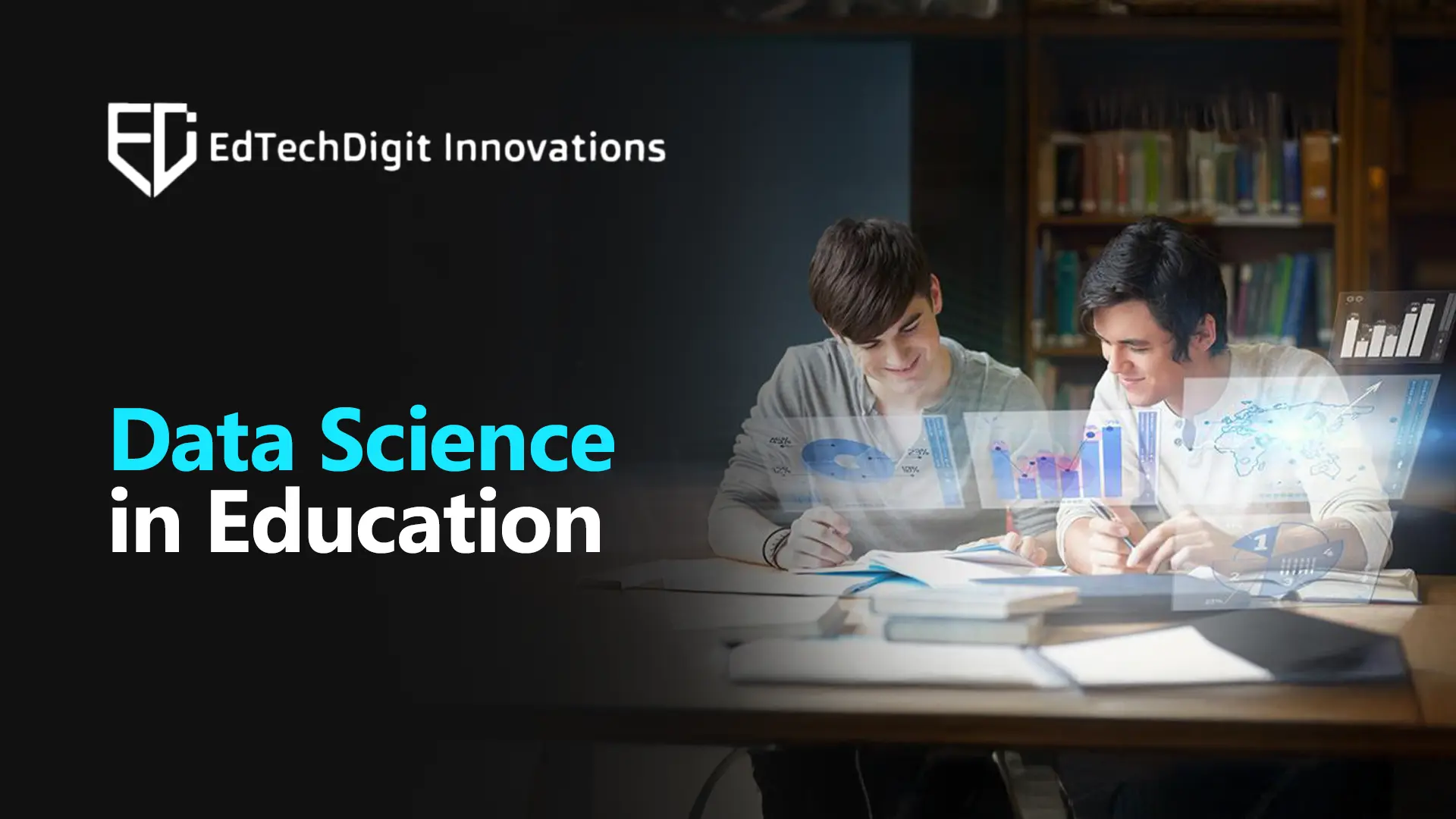Data science consists of a lot of things, including data analysis, machine learning, statistical methods, etc., to gain insights and enhance the overall educational experience. Institutes can collect and analyze huge amounts of student data and other learning platforms to improve student outcomes and enhance the overall learning experience. Using data science techniques in higher education can also be highly beneficial in refining teaching strategies and improving administrative efficiency.
Educators and policymakers can also use these insights to make informed decisions, as well as intervene on time if required. The ultimate purpose of data science in education is to enhance the overall education experience, streamline administrative operations, and power continuous improvement throughout the education system.
Relevance of Data Science in Education
With the world getting highly digitized, the importance of data science is growing across all industries and not just education. As per Markets and Markets, the overall data science industry is expected to reach $401.2 billion by 2028, exhibiting a CAGR of 12.7%. When it comes to data science in education, the global market is expected to reach $36.12 billion by 2027, growing at a CAGR of 14.92% (Source: Research and Markets). This indicates how rapidly institutions are adopting data science in their core operations.
Data science isn’t only about personalizing content or enhancing learning performance. It goes beyond that by streamlining administrative processes and using predictive analysis to identify students at risk, and even more. Moreover, the rising popularity of online learning after the COVID-19 pandemic has further fueled the importance of data in tracking student engagement and optimizing virtual classrooms. So, by using the insights derived from data, educational institutions can continuously fuel their innovations and deliver high-quality learning.
Power-packed Applications
Data science is undoubtedly a revolutionary technology, and in the education sector, it is helping build a smarter environment, powering data-driven decisions. Data science helps to improve student assessment through real-time analytics and helps teachers determine their learning gaps so that they can personalize their instructions.
Apart from academics, data science can also help provide insights about students' social and behavioral development by analyzing their interaction patterns. Institutions used data science to develop their curriculum according to industry requirements, which ensures graduates are job-ready. Not just that, data science also supports continuous professional development for educators by evaluating their teaching effectiveness and classroom outcomes.
Here are some of the top applications of data science in the education sector:
- Student assessment data
Data science can help track student engagement and understanding in virtual classrooms in real time. Big data analytics can help identify their performance gaps so that teachers can make timely interventions.
- Social and behavioral skills
Data science techniques can be used to analyze students' online interactions and evaluate their social and behavioral development. This will help educators to provide more personalized and targeted support for soft skills and personality growth.
- Guardian engagement
Institutions can use data science to analyze parent-teacher workshop attendance and send alerts for missed events. Personalized sessions can be conducted for parents to emphasize the value of their involvement in children's education. For example, Schools sending customized notifications based on prior engagement history.
- Curriculum development
Institutions can use data science tools to understand the market trends so that they can update their curriculum accordingly. It is also recommended to leverage the feedback from stakeholders and industry experts to improve the quality of the curriculum and ensure they are relevant to industry requirements.
- Instructor performance evaluation.
Data science tools can be used to analyze; teaching methodologies of instructors and student outcomes that will help assess how effective an instructor is. It involves using data-driven insights to recognize different teaching practices that are effective in student success.
- Student demographics analysis
Institutions can gather demographic data of students and use data science techniques to understand their background and customize educational approaches accordingly. This adaptation of teaching methods will help to accommodate students from various backgrounds and preferences.
Advantages
Be it primary or higher education, the use of data science tools and techniques can offer greater insights that will help improve teaching and learning outcomes. While it can be used to train and empower educators through data, visualization, and predictive tools, it can also be used to identify trends and address challenges promptly.
Educators can analyze large amounts of data and understand their students’ behavior, learning patterns, as well as instructional effectiveness. Also, predictive models can forecast issues such as student dropouts, delays, and thus, help with timely interventions.
Most importantly, data science also helps with strategic development and guides educators to update their curriculum and allocate their resources properly. This helps make contextualized education possible, and teachers can customize their teaching methods according to individual students' needs.
Challenges
Despite being a transformative technology, data science in education also has a few challenges to consider. Ethical concerns regarding student privacy and consent require strict guidelines and oversight.
Secondly, data science is a complex technology, and a lack of skilled professionals may prevent it from being as effective as it could be. Also, many institutions struggle with limited resources, such as low funding and a lack of technical expertise. Apart from this, resistance to change from educators and administrators is also a huge problem, leading to slow adoption of data science in education. Additionally, educational institutions must also adhere to regulatory requirements, such as FERPA, which adds to the complexity.
Therefore, institutions that want to leverage the power of data science must address these challenges effectively so that they can enjoy the true benefits for students and institutions.
Conclusion
The integration of data science in education sector comes with a lot of benefits, right from improving student outcomes to fueling innovations in learning systems. But to fully realize this vision, educational institutions must address the challenges promptly. Through strategic planning, sufficient resource allocation, and strong collaboration among educators, administrators, and policymakers, data science can truly become a powerful contributor in shaping the future of education.

